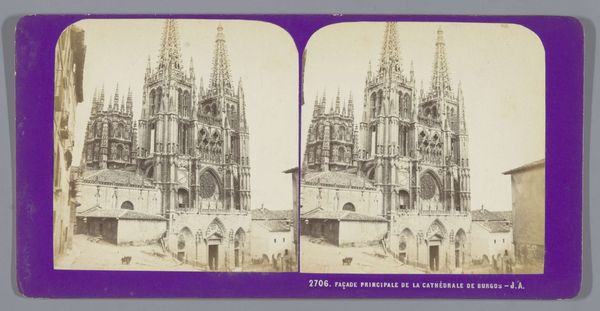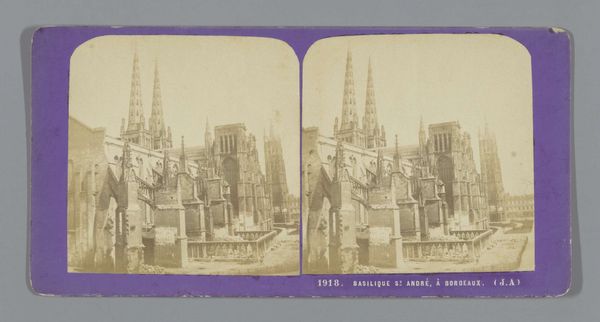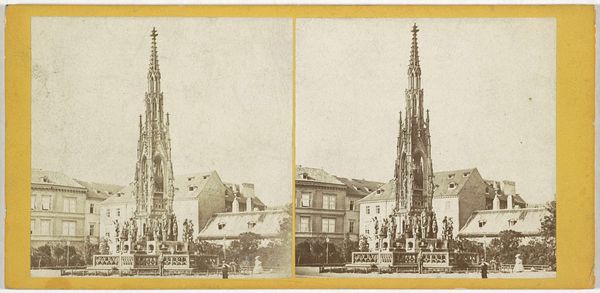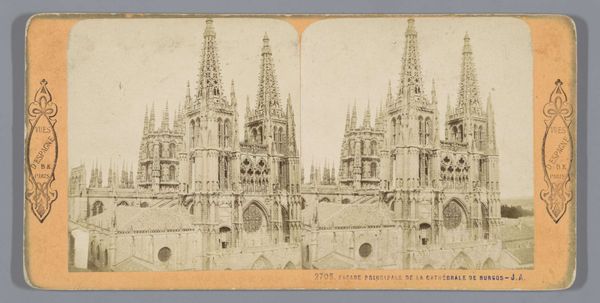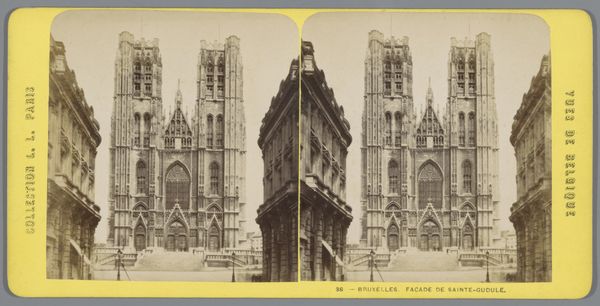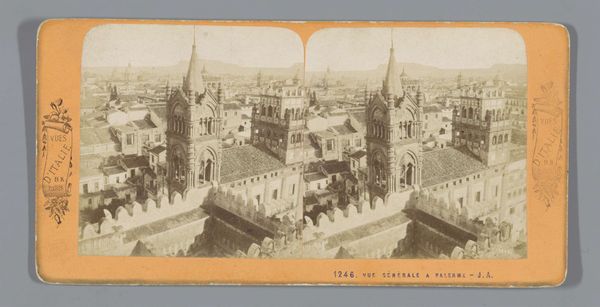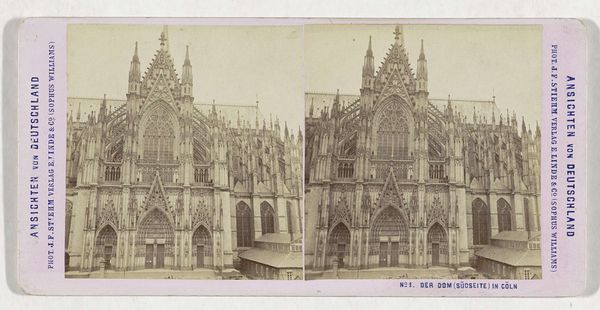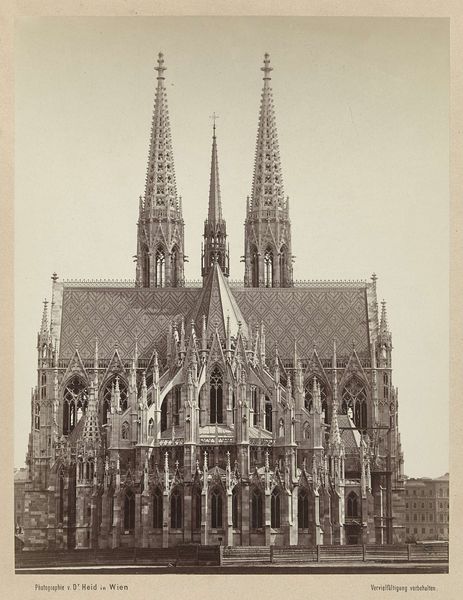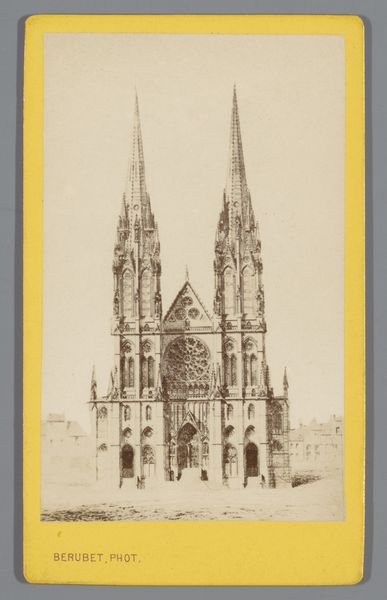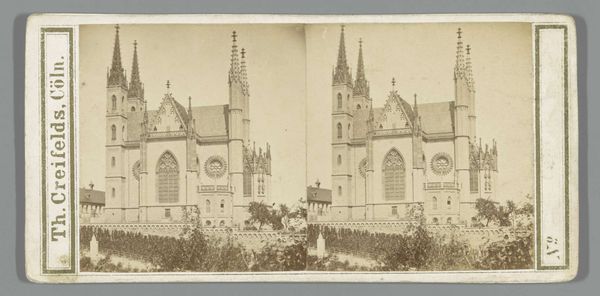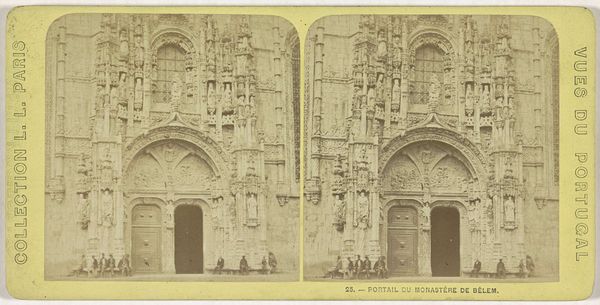
print, photography
# print
#
landscape
#
photography
#
cityscape
#
building
Dimensions: height 85 mm, width 170 mm
Copyright: Rijks Museum: Open Domain
Curator: Before us is Jean Andrieu's "View of Burgos Cathedral," a stereoscopic photograph that he worked on from 1862 to 1876. Editor: Stark. The monochrome emphasizes the cathedral's assertive verticality—almost brutally punctuating the sky, while the washed-out light creates a palpable distance between us and the monument. Curator: The cityscape functions quite meticulously. Andrieu uses a clear foreground, midground, and background, creating distinct planes. It shows an emergent understanding that the burgeoning photographic medium would inevitably challenge traditional pictorial conventions of art. Editor: Convention-breaking, certainly, but not devoid of conventional strategies. The artist juxtaposes the solid mass of architecture with more fragile and almost indefinite skies. Isn’t it also political, showing us a period of Spain’s religious institutions solidifying power via a physical statement to the community? Curator: Indeed. While aesthetically rigid, we also can explore the impact on spatial representation and its challenge to the classical ideals of single-point perspective. The dual-image presentation attempts to create a more "real" sense of depth. Photography democratizes the grand tour, making it more accessible to a wider audience. Editor: The image still reads like a carefully composed print—the lighting alone feels deliberate and studied. I'm fascinated by the textures and gradients achievable via light capture. The contrast between shadow and muted details feels so controlled that the image attains this almost tactile quality. Curator: I perceive a tension within its form. On the one hand, it signals documentary truth through technology, yet its presentation participates in a much larger tradition of romantic landscape art that was so important across Europe. Editor: And that tension gives it a lot of visual and conceptual weight, doesn't it? We get the grandeur and the scale, yes, but we're also asked to consider how that is being communicated to an audience through technology that seems so objective. Curator: Absolutely. It really encapsulates so much about the moment in history it captures, as photography becomes the lens through which modernity understands itself. Editor: Indeed, a visual statement of social context.
Comments
No comments
Be the first to comment and join the conversation on the ultimate creative platform.
